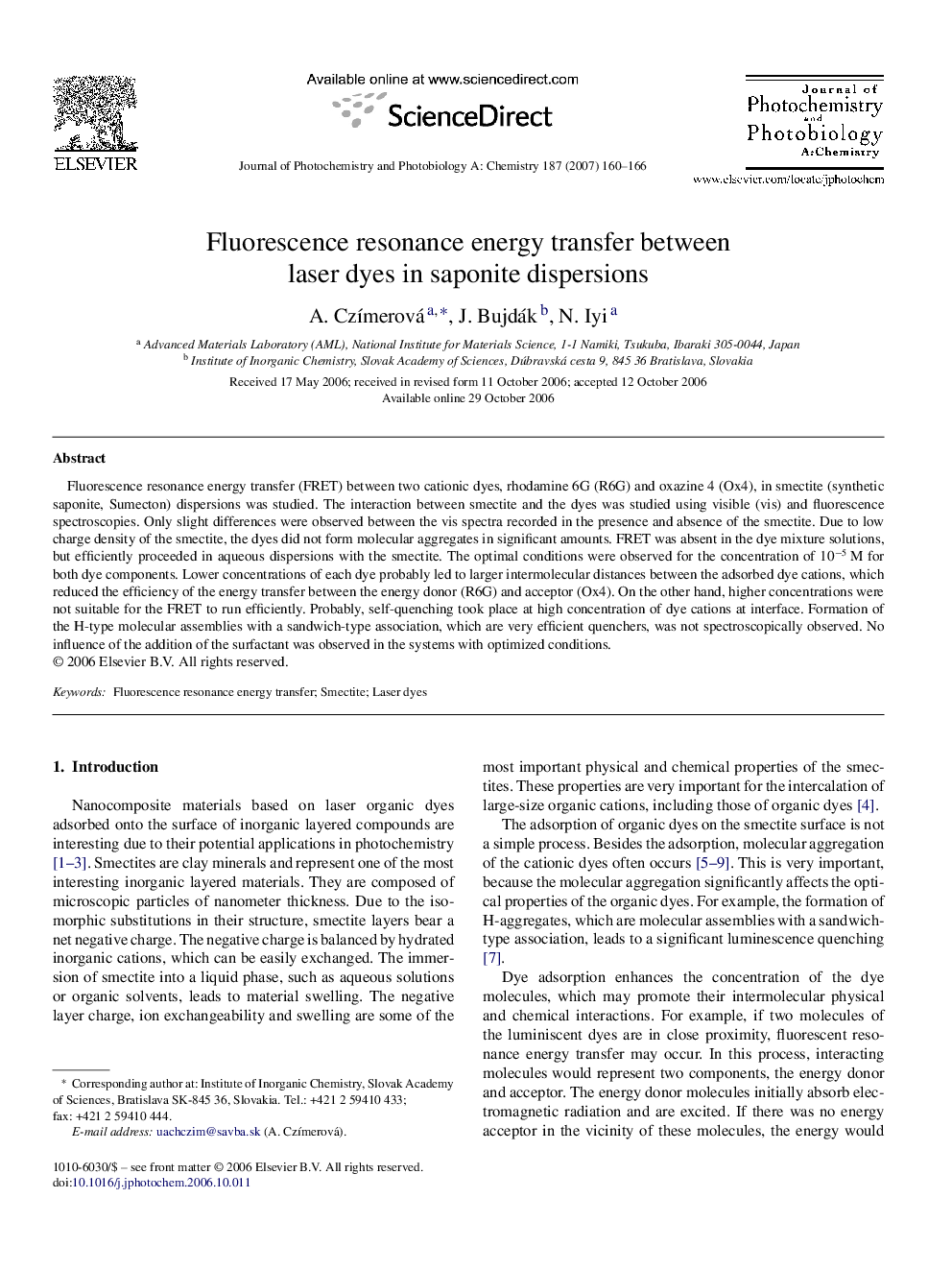| کد مقاله | کد نشریه | سال انتشار | مقاله انگلیسی | نسخه تمام متن |
|---|---|---|---|---|
| 28222 | 44066 | 2007 | 7 صفحه PDF | دانلود رایگان |

Fluorescence resonance energy transfer (FRET) between two cationic dyes, rhodamine 6G (R6G) and oxazine 4 (Ox4), in smectite (synthetic saponite, Sumecton) dispersions was studied. The interaction between smectite and the dyes was studied using visible (vis) and fluorescence spectroscopies. Only slight differences were observed between the vis spectra recorded in the presence and absence of the smectite. Due to low charge density of the smectite, the dyes did not form molecular aggregates in significant amounts. FRET was absent in the dye mixture solutions, but efficiently proceeded in aqueous dispersions with the smectite. The optimal conditions were observed for the concentration of 10−5 M for both dye components. Lower concentrations of each dye probably led to larger intermolecular distances between the adsorbed dye cations, which reduced the efficiency of the energy transfer between the energy donor (R6G) and acceptor (Ox4). On the other hand, higher concentrations were not suitable for the FRET to run efficiently. Probably, self-quenching took place at high concentration of dye cations at interface. Formation of the H-type molecular assemblies with a sandwich-type association, which are very efficient quenchers, was not spectroscopically observed. No influence of the addition of the surfactant was observed in the systems with optimized conditions.
Journal: Journal of Photochemistry and Photobiology A: Chemistry - Volume 187, Issues 2–3, 15 April 2007, Pages 160–166